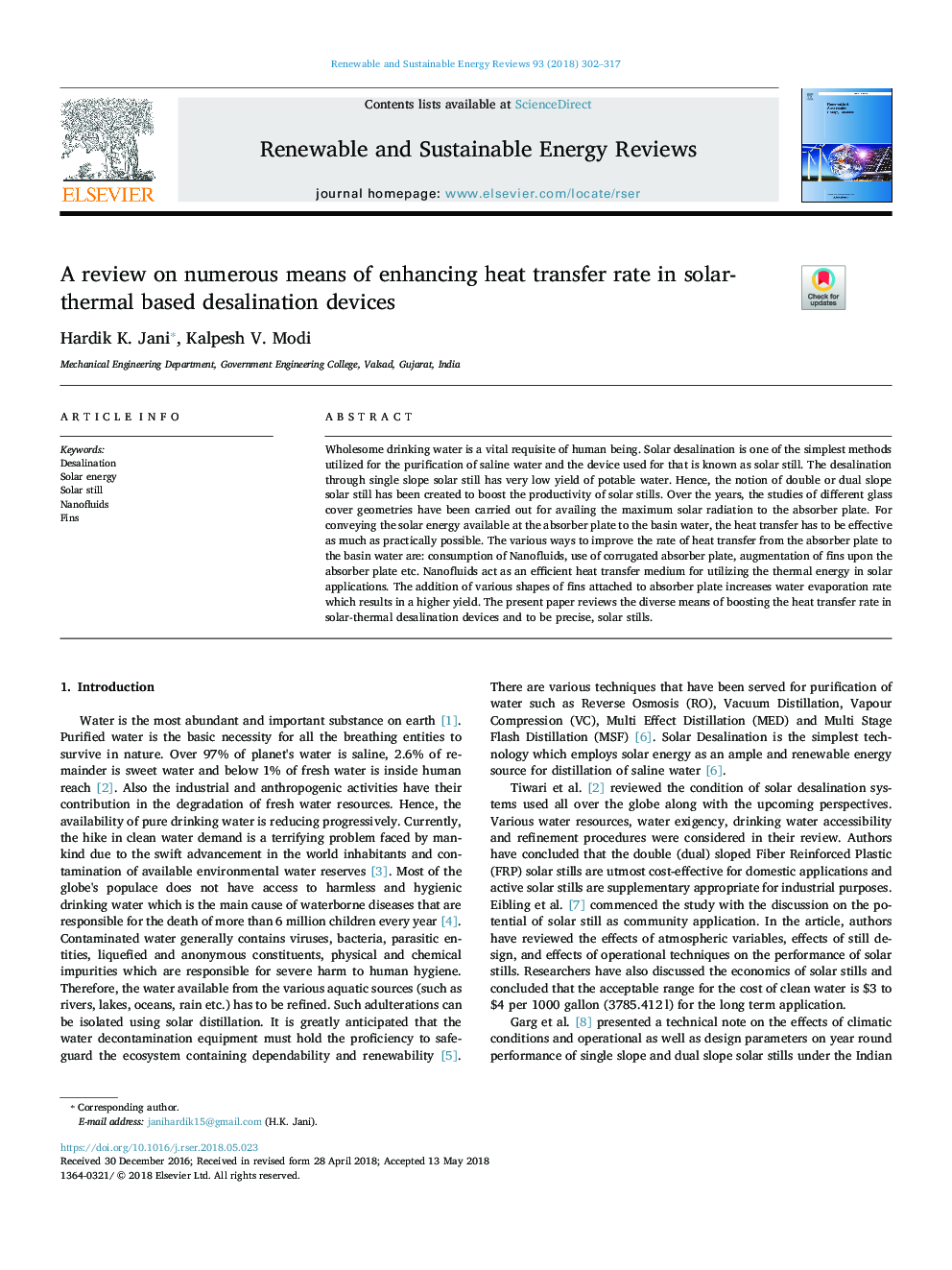| Article ID | Journal | Published Year | Pages | File Type |
|---|---|---|---|---|
| 8110706 | Renewable and Sustainable Energy Reviews | 2018 | 16 Pages |
Abstract
Wholesome drinking water is a vital requisite of human being. Solar desalination is one of the simplest methods utilized for the purification of saline water and the device used for that is known as solar still. The desalination through single slope solar still has very low yield of potable water. Hence, the notion of double or dual slope solar still has been created to boost the productivity of solar stills. Over the years, the studies of different glass cover geometries have been carried out for availing the maximum solar radiation to the absorber plate. For conveying the solar energy available at the absorber plate to the basin water, the heat transfer has to be effective as much as practically possible. The various ways to improve the rate of heat transfer from the absorber plate to the basin water are: consumption of Nanofluids, use of corrugated absorber plate, augmentation of fins upon the absorber plate etc. Nanofluids act as an efficient heat transfer medium for utilizing the thermal energy in solar applications. The addition of various shapes of fins attached to absorber plate increases water evaporation rate which results in a higher yield. The present paper reviews the diverse means of boosting the heat transfer rate in solar-thermal desalination devices and to be precise, solar stills.
Related Topics
Physical Sciences and Engineering
Energy
Renewable Energy, Sustainability and the Environment
Authors
Hardik K. Jani, Kalpesh V. Modi,
